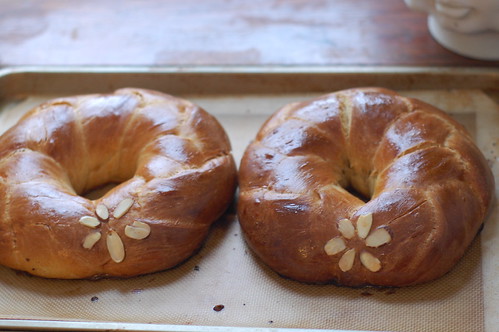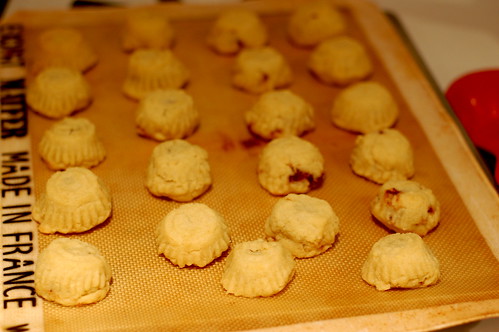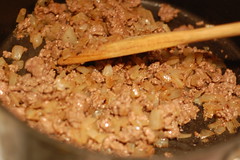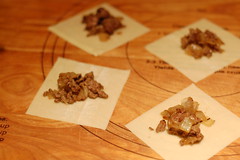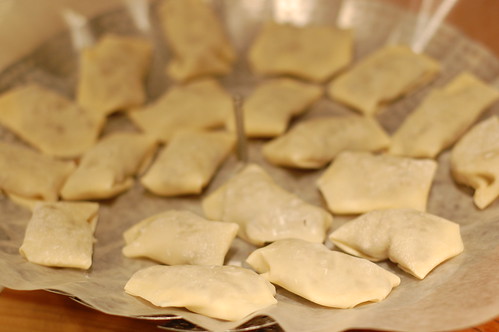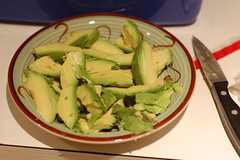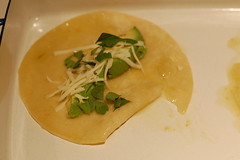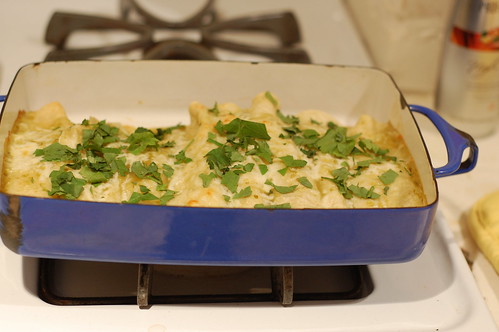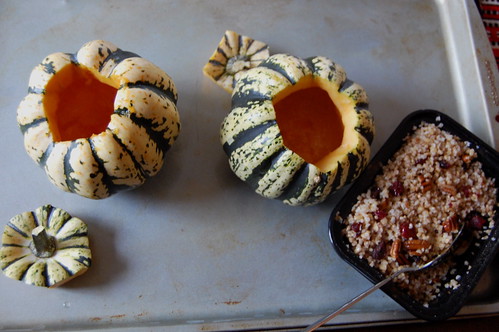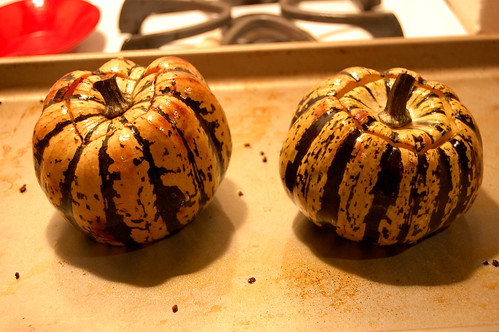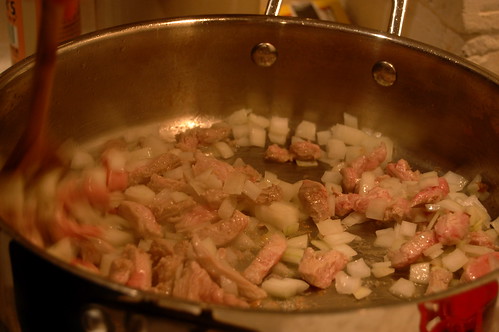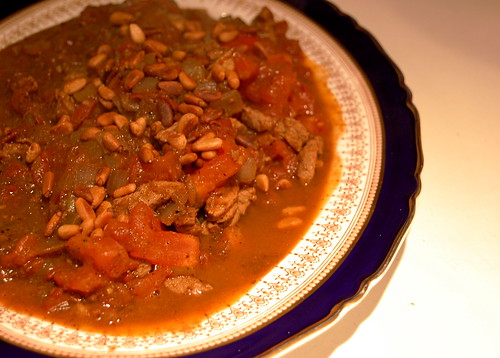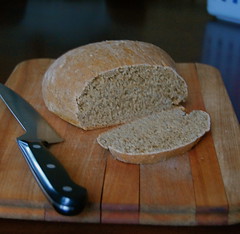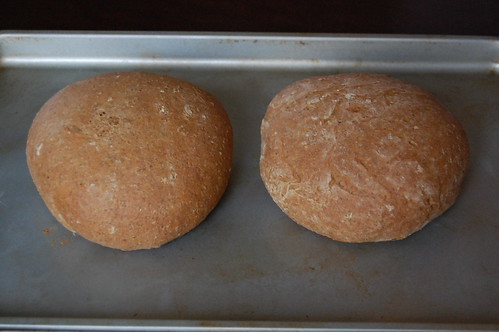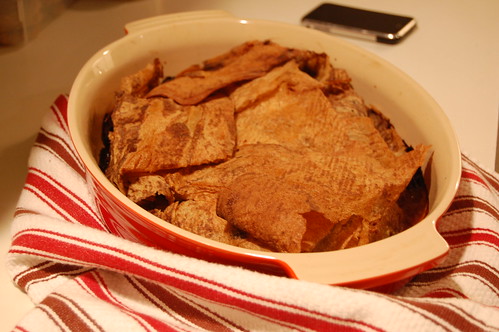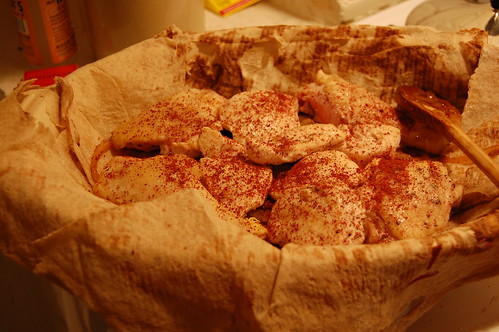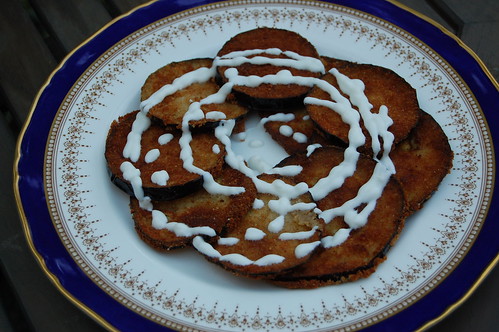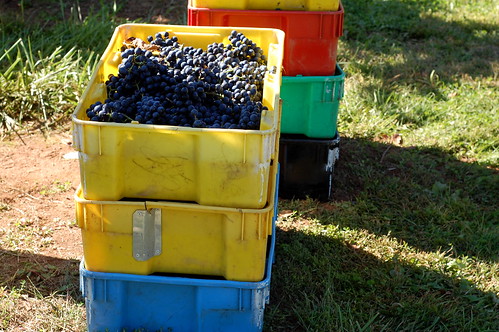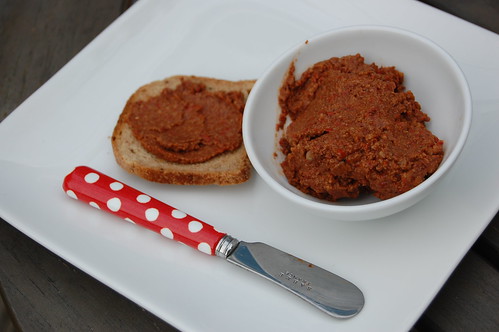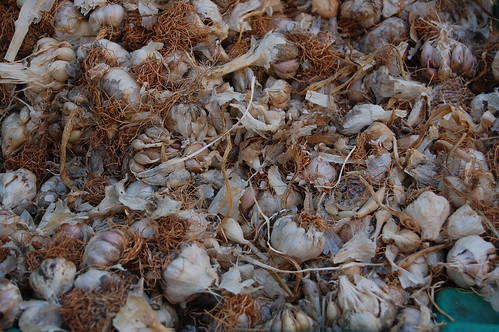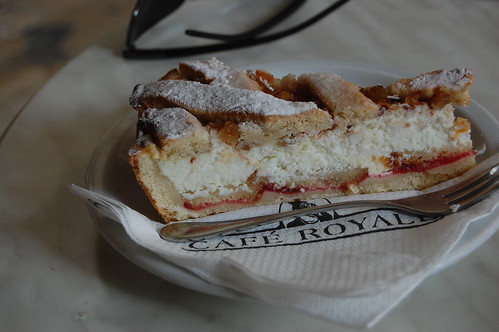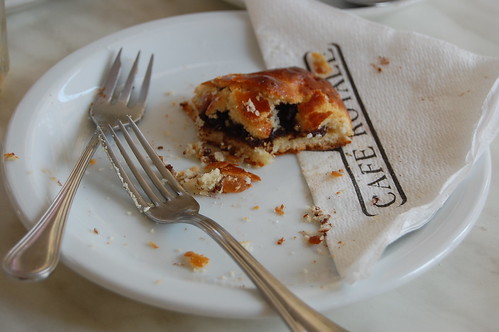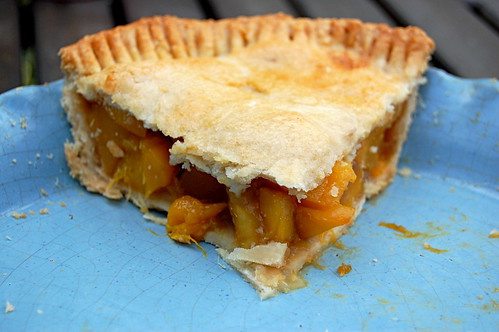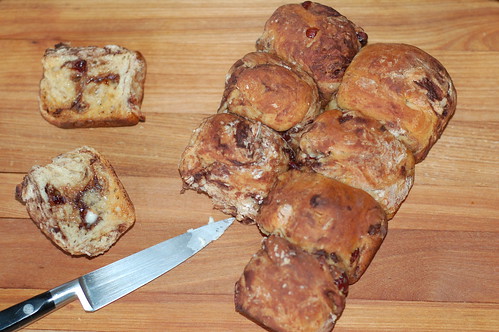
I've been a bit on a yeast bread kick lately. Maybe it's the fall weather, or maybe it's simply my desire to not go to the store when I need bread. Hey, I've got flour and yeast and such, I'll see what I can make.
Often when I'm in this mood I turn to one of my many bread cookbooks, and one that I love is Homebaking by Jeffrey Alford and Naomi Duguid. If you aren't familiar with their cookbooks, I recommend them immensely. I want to be these people. They travel all over the world, collect recipes and stories, and publish them in these gorgeous coffee table-size books full of pictures and inspiring recipes. They are, in many ways, anthropologists first and cookbook authors second.

The recipe I made this time was cranberry chocolate rolls. I may not big the world's biggest fan of chocolate, but these are excellent. They remind my a bit of babka, only without the labor intensive egg rich dough. And while chocolate has a sweet role, I think the dark chocolate here also shows its savory side, deeply flavorful and warm as you might find chocolate in a mole sauce.
While these rolls can be a bit firm when cool, they are perfect when sliced and toasted with a dab of butter, or simply quickly warmed in the oven.
 Chocolate Cranberry RollsThough the original recipe called for chilled chocolate chips, I prefer using chopped chocolate, which gives nice swirls of chocolate throughout the dough. The recipe also cuts in half nicely if you want only one small pan of rolls.
Chocolate Cranberry RollsThough the original recipe called for chilled chocolate chips, I prefer using chopped chocolate, which gives nice swirls of chocolate throughout the dough. The recipe also cuts in half nicely if you want only one small pan of rolls.2 cups milk, heated until lukewarm
2 teaspoons active dry yeast
About 5 cups all-purpose flour
2 tablespoons unsalted butter, cut into very small pieces, plus a little butter for shaping the buns
2 tablespoons granulated sugar
1 large egg, beaten
1/4 teaspoon salt
3/4 cups roughly chopped semisweet chocolate
1/2 cup dried cranberries, plumped in hot water for about 5 minutes
1/4 teaspoon ground cinnamon
For egg wash/topping:
1 egg, whisked with 2 tablespoons warm water, for egg wash
About 3 tablespoons granulated or pearl sugar
1. Place the milk in a medium bowl and stir in the yeast. Let stand for several minutes, then stir in 1 cup of the flour. Add the butter, sugar, cinnamon, egg and salt and stir to incorporate. Add 2 more cups flour and stir, always in the same direction, until smooth. Add the chocolate and cranberries, together with 1/2 cup more flour, and stir to incorporate.
2. Turn the dough out onto a generously floured surface and knead gently, folding the dough over on itself and incorporating flour as needed until the dough is only slightly sticky, about 4 minutes.
3. Place the dough in a clean greased bowl, cover with a plastic wrap and let rise until doubled, about 1 1/2 hours.
4. Turn the dough out onto a lightly floured surface. Cut in half, then cut each half into 8 pieces, and lightly cover them. Lightly butter two 9-by-5 inch bread pans or two 8-inch round cake pans.
5. Place rack in the center of the oven and preheat the oven to 400 degrees F.
6. Grease your palm with a little butter, then roll one piece of dough lightly under your hand to shape it into a rough ball. Place the ball in one of the pans and continue with the remaining dough. Cover with cloth or plastic and let rise for 30 minutes.
7. Just before baking, brush each loaf with the egg wash. Sprinkle the sugar over them and bake for 30 to 40 minutes (the timing will vary with the shape of the pans; they usually bake more quickly in cake pans), until puffed and golden brown. Immediately remove from the pans; let cool on a rack. These are best after they’ve cooled almost to room temperature. Tear off rolls, or slice like a loaf if you prefer.


